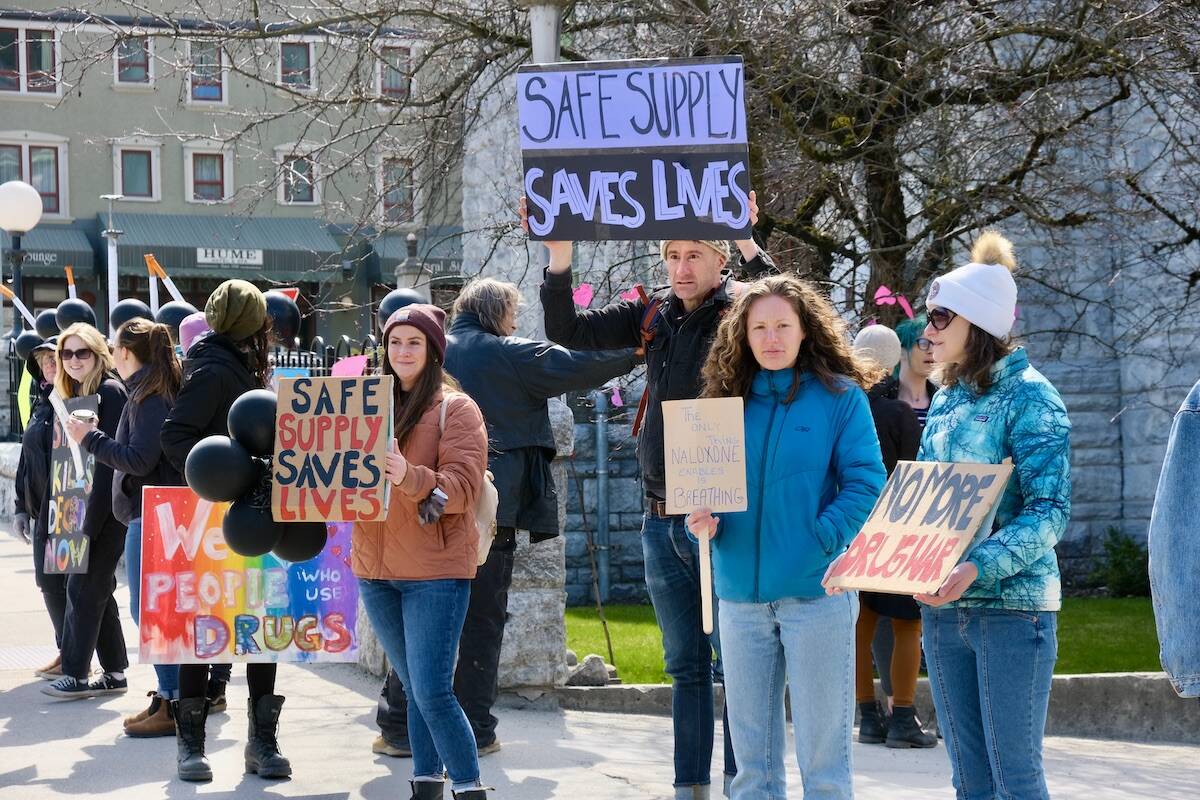More than five people lost their lives to B.C.’s toxic drug crisis every day in April, bringing the total number of deaths recorded in 2022 so far to 722.
The latest data from the BC Coroners Service slows a slight decrease in the number of monthly deaths this year, from 210 in January, to 186 in February, 165 in March and now 161 in April.
Month over month, the BC Coroners Service says April showed a slight decrease in the number of men fatally overdosing, and a slight increase in the number of older folks dying.
The majority of deaths were recorded in the Fraser and Vancouver Coastal health authorities, where 54 and 38 people died, respectively. Vancouver Island saw 32 deaths, while the Interior recorded 21 and the Northern Health Authority saw 16.
The highest death rates, though, were on the Island and in northern areas, according to the BC Coroners Service. In all of 2022, the local health areas with the highest rates have been Lillooet, Mission, Cariboo/Chilcotin, Merritt and Alberni/Clayoquot.
The BC Coroners Service says the vast majority of deaths continue to occur inside. In 2022, 57 per cent of people who fatally overdosed were inside their own residence and 27 per cent were inside supportive housing, a shelter, a hotel or another indoor location.
The report also shows benzodiazepines, which don’t respond to naloxone, continue to be detected at increasing rates.
B.C.’s chief coroner Lisa Lapointe said in a Thursday (June 9) news release that April’s report continues to highlight the volatility of the illicit drug market and the need for a safer regulated supply.
She said until that occurs, people need to be taking drugs with someone who can provide help if they overdose.
“Anyone using illicit substances, whether they are regular or occasional drug users and whether they know their dealer or not, is currently at risk from the unpredictable, unregulated supply,” she said.
In a report released by a BC Coroners Service death review panel in March, experts called for urgent action, including a safer supply and decriminalization.
In late May, Health Canada announced it would be decriminalizing the personal possession of up to 2.5-cumulative grams for B.C. residents begginning on Jan. 31, 2023, but many people, including Lapointe, have been critical of the approved amount. They say it’s unrealistically low for most people at risk of overdosing, and does little to decriminalize their needs.
Since 2012, 11,262 people have died to toxic drug overdoses.
READ ALSO: For decriminalization to save lives, users need to be allowed to carry more drugs: B.C. advocates
READ ALSO: Take-home fentanyl tests could increase safer drug consumption in B.C.: study
@janeskrypnek
jane.skrypnek@bpdigital.ca
Like us on Facebook and follow us on Twitter.

